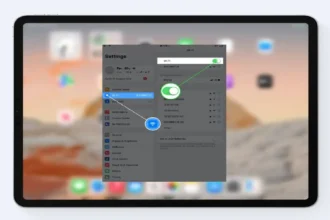We always think that iOS has very limited potential due to its strict privacy and security settings. But there is a vast range of new things that are yet to try out, one of those things is called WebKit. There are so many potential things that you can do with WebKit if you are a developer, working on iOS applications. WebKit, the potent browser engine that drives Safari on iOS devices, is undoubtedly already known to developers working on iOS apps. However, did you know that WebKit can also be used in your own apps to build web content and include web technologies? So, in this article, I will be showing you o how to use WebKit.
What is WebKit iOS?
The Safari browser for iOS, macOS, and other Apple platforms is powered by the WebKit browser engine, which was created by Apple. Developers can use it to show web information and interact with web technologies in their own iOS applications.
In addition to displaying online pages and running JavaScript code, WebKit also takes care of network connectivity, security, caching, and other webrelated duties. HTML, CSS, JavaScript, and WebAssembly are just a few of the many online standards and technologies it supports.
Other iOS apps like Twitter, Facebook, and LinkedIn use WebKit instead of Safari to show online information inside their apps. Developers can also use WebKit to build their own unique custom web views for their apps, which can be helpful for integrating web technologies as well as for presenting web-based content like news articles, movies, or maps.
How to use WebKit iOS?
There are a few steps that you need to follow in order to use WebKit.
- Setting up a Web View
- Loading Content
- Handling User Interactions
STEP 1: Setting Up a Web View
The first step in using WebKit on iOS is to set up a web view. A web view is a view that can display web content, and it’s the main interface for interacting with WebKit in your app. Here’s an example of how to create a web view in Swift:
In this example, we’re making a web view and adding it to the view controller’s view hierarchy.
import UIKit
import WebKit
class ViewController: UIViewController {
var webView: WKWebView!
override func viewDidLoad() {
super.viewDidLoad()
// Create a web view
webView = WKWebView(frame: view.frame)
view.addSubview(webView)
// Load some content
let url = URL(string: “https://www.example.com”)!
webView.load(URLRequest(url: url))
}
}
Step 2: Loading Content
A URLRequest can be used to load material into a web view after it has been configured. An example of how to load material from a local HTML file is given below:
In this example, the HTML file at htmlUrl is being loaded using the loadFileURL function. In order for WebKit to load the file, we also need to indicate that we’re granting read access to the URL.
let htmlPath = Bundle.main.path(forResource: “index”, ofType: “html”)!
let htmlUrl = URL(fileURLWithPath: htmlPath)
webView.loadFileURL(htmlUrl, allowingReadAccessTo: htmlUrl)
Step 3: Handling User Interactions
The capability of WebKit to manage user interactions in your web view is one of its most potent features. For instance, instead of opening links in Safari, you can intercept them and process them in your app.
An example of how to manage links in your web view is shown below: In this illustration, we’re implementing the decide policy for method to manage navigation requests and configuring the navigation delegate for our web view.
class ViewController: UIViewController, WKNavigationDelegate {
var webView: WKWebView!
override func viewDidLoad() {
super.viewDidLoad()
// Create a web view
webView = WKWebView(frame: view.frame)
view.addSubview(webView)
// Set the navigation delegate
webView.navigationDelegate = self
// Load some content
let url = URL(string: “https://www.example.com”)!
webView.load(URLRequest(url: url))
}
// Handle navigation requests
func webView(_ webView: WKWebView, decidePolicyFor navigationAction: WKNavigationAction, decisionHandler: @escaping (WKNavigationActionPolicy) -> Void) {
guard let url = navigationAction.request.url else {
decisionHandler(.cancel)
return
Until next time, with another topic. Till then, Toodles.





